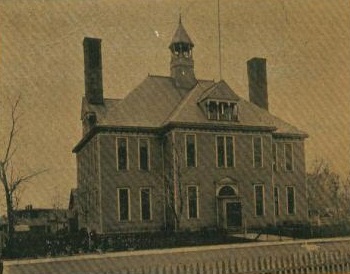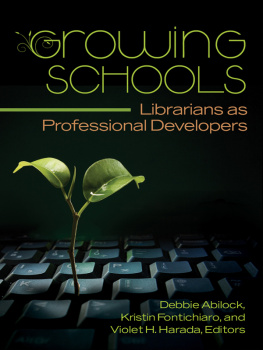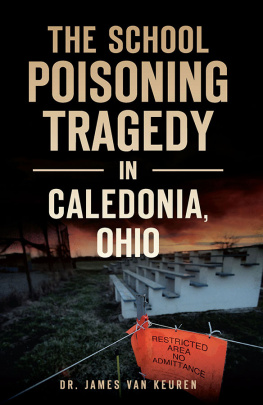The Old School
The Mid-Valley Elementary School in Olyphant,Pennsylvania
Cover photograph: Digitally altered image of theOlyphant Central School and Olyphant Senior High School from the1955 Olyphant High School Yearbook
Copyright 2015 Joseph Peter Klapatch
Published by Joseph Peter Klapatch at Smashwords
Electronic Edition: February 2016
ISBN: 9781310503733
Smashwords Edition License Notes
This ebook is licensed for your personal enjoymentonly. This ebook may not be re-sold or given away to other people.If you would like to share this book with another person, pleasepurchase an additional copy for each recipient. If youre readingthis book and did not purchase it, or it was not purchased for yourenjoyment only, then please return to Smashwords.com or yourfavorite retailer and purchase your own copy. Thank you forrespecting the hard work of this author.
Table of Contents
Preface
When I was incollege, students sometimes discussed their high school experiencesin the dining halls and the student lounges. They talked aboutcourses that they had taken, peculiar teachers that they had, orhow bad the food was in the cafeteria. Some would embellish thesuccesses of their high school sports teams, and how they helpedwin the big game for the team.
I would tell some stories about elementaryschool and high school. My stories were not typical in comparisonto theirs. As an adult in the workplace and as a parent at my kidsschool functions I may tell a story or two about my schoolexperiences. I recount makeshift jerry-rigged quick fixes that wereimplemented to deal with issues around old outdated schoolbuildings. This was not an issue of socioeconomic disparity.Neighboring school districts with the same demographics had builtnew modern facilities. This was an issue of obstructionism. Someresidents in my community were very vocal, and opposed new schoolconstruction with a vengeance.
The setting for this book is in the boroughsof Dickson City, Olyphant, and Throop in Lackawanna County,Pennsylvania near Scranton. In the late nineteenth century and theearly twentieth century, the main industry was the mining ofanthracite which is also called hard coal. This differs frombituminous or soft coal which is mined elsewhere in the country.Even though most deep coal mining operations ceased in the 1960s,the area comprised of Carbon, Columbia, Dauphin, Lackawanna,Luzerne, Northumberland, Schuylkill, Sullivan, and Susquehannacounties is often referred to as the Anthracite Coal Region.
This book has two parts, History andMemoir. The History part of the book consists offactual data about the schools of Olyphant from 1855 through 1969.I intertwine some stories that my father, my grandfather, and mygrandfathers older brother, my great-uncle John had told me. Thesestories add a personal perspective to the history. I also includesome information about Dickson City and Throop schools. This isbackground information for the Memoir part of the book. Thisis a narrative about my public school education starting in 1969with kindergarten, and concluding with graduation in 1982. I alsoinclude an Epilogue with a snapshot of the current status of itemsdiscussed.
I mention some teachers by name in thecaptions of photographs, but I do not mention my teachers by namein the narratives. This is because I had some really excellentteachers. If I mentioned some teachers in the narratives, I wouldhave felt compelled to write additional narratives to includeothers. In many of these teachers classes, there were nooccurrences that would fit into the scope of this book. Instead, Ilist all of my teachers in the Acknowledgments.
PART I -HISTORY
Chapter I - The Schools of Olyphant, Pennsylvania
In the 1860s, theboroughs of Archbald, Blakely, Dickson City, Jermyn, Jessup,Olyphant, and Throop were all part of Blakely Township, in LuzerneCounty, Pennsylvania. On August 27, 1867, Blakely Borough was thefirst municipality to separate from the township. [1] By the late1870s individual municipalities separated such that BlakelyTownship no longer existed. On August 13, 1878, Lackawanna Countywas created from the part of Luzerne County that included thecities of Scranton, and Carbondale; and the aforementionedmunicipalities. [2]
[1] 1967. "Blakely's Beginnings."Blakely Centennial 1867-1967.
[2] Harrisburg Independent[Harrisburg, PA]. 1878. "Alter Your Maps - Lackawanna a County."August 14: 1.
Olyphant was incorporated as a borough in1877. It was named after George Talbot Olyphant, who was thePresident of the Delaware and Hudson Company. [3] This companyowned and operated canals, coal mines, and a railroad.
[3] 1958. "History of Olyphant,Pennsylvania." Olyphant Centennial: 100th Anniversary of CoalMining and Old Home Week Celebration August 25 to September 1,1958.
According to the 1880 United States Census,the population of Olyphant was 2,094. In 1855, when Olyphant wasstill part of Blakely Township, a one-room schoolhouse was built ona tract of land that was owned by Seth Pearce. In 1883, a gradedschool was built in the new borough. A graded school is aschool where students are assigned to first grade, second grade,etc. In the one-room schoolhouses, the curriculum was lessorganized. The graded school was called the Olyphant CentralSchool. The building was 62 feet by 72 feet and had two-stories.Each story had a height of 14 feet. The foreman for theconstruction of this school was B. B. Wells. [4] The seven-roomwooden building was located on a tract of land that was bound byChurch Street, Susquehanna Avenue, and Race Street (now LincolnStreet). [5][6]
[4] Evening Times [Scranton, PA].1883. August 6: 4.
[5] 1958. "History of Olyphant,Pennsylvania." Olyphant Centennial: 100th Anniversary of CoalMining and Old Home Week Celebration August 25 to September 1,1958.
[6] Hoyes, Olwen. 1977. "Readin',Writin' and Rithmetic." In Borough of Olyphant, Pennsylvania 100years - A History of the Borough of Olyphant, 16-19. OlyphantCentennial Corp.

The Olyphant Central School which was built in 1883and was razed in approximately 1910 Courtesy of MartyOConnor
This school had elementary school grades aswell as high school. There was no kindergarten. At the timechildren would stop going to school when they got jobs. Many of thegirls got jobs at the local silk mills. Many of the boys wereemployed as breaker boys at a coal breaker. A coal breaker is afacility where coal is cleaned and processed after it is mined outof the ground. Coal was broken into various sizes for differentuses. The breaker boys sat on wooden benches that were installedacross chutes. Coal was released at the top, and ran down thechutes. The breaker boys manually removed impurities such as piecesof slate, often with their bare hands as the coal passed under themin the chute.
More often than not, the children who workeddid not keep the money that they earned. They gave it to theirparents to help pay for food, and other living expenses. Very fewstudents graduated from high school. In fact, there were teacherswho had not graduated from high school. There were very fewstudents in the school who were taking high school courses.
The pastor of Saint Patricks Roman CatholicChurch, Father Patrick J. Murphy was concerned that three-quartersof the boys in the community left school before the age of ten.Because of this, Saint Patricks Parish built The Parochial Academyon Delaware Avenue among the other properties of the parish. Thisschool was established to accommodate children ten years old andyounger. Initially it only offered grades one through four. It alsohad kindergarten.









